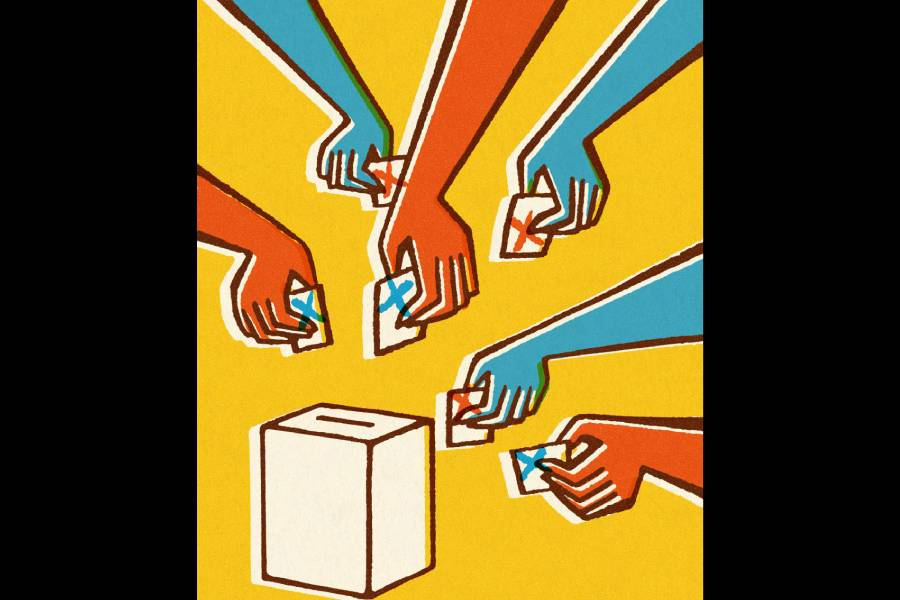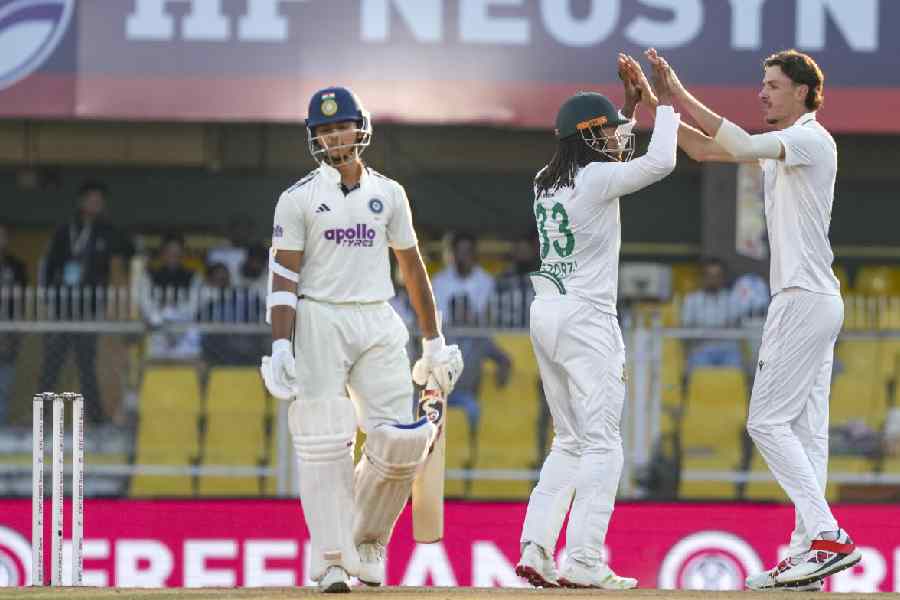On the eve of the general election, the issue of ‘one nation, one election’ is on the hot burner, once again. For a section of the political community and the media, it is the need of the hour. The former president of India, Ram Nath Kovind, argued for it in his address to Parliament on January 29, 2018 because of the adverse effects of frequent elections on national and human resources. The prime minister echoed the same view emphatically in his Independence Day speech in 2019. The Central government has now set up a panel to explore the feasibility of holding simultaneous elections.
Elections are the locomotives of indirect democracy. They may be regarded as administrative arrangements to achieve two objectives in one go as they enable voters to not only choose their leaders but also ensure their accountability. Elections facilitate the expression of public opinion and ensure legitimacy to rule.
India had experienced simultaneous elections until 1967. The premature dissolution of some state assemblies in 1968-69 and the suspension of the Lok Sabha ahead of the elections in 1970 caused a setback as the parliamentary and the state polls cycle got disjointed due to factors like defection, splits and dissolution from 1967.
Simultaneous elections are not unknown in democracies. In Sweden, for example, elections to the national legislature, provincial legislatures, and county councils are held not only simultaneously but also on a fixed day — the second Sunday of September every four years. In South Africa, elections to the national and provincial legislatures are held at an interval of five years. National and state elections were held simultaneously in Nepal in 2017. The parliamentary standing committee on personnel, public grievances, law and justice pleaded for simultaneous elections in 2015 in its 79th report. A blue print was also drawn up.
The ‘one nation, one election’ formula sounds wise and has some inherent advantages as it enables democratic structures at all levels to concentrate on development and governance without interruption. The imposition of the code of conduct frequently stands in the way of taking important and urgent policy decisions.
Elections are highly expensive and time-consuming exercises in a fairly large country like ours. Given the fact that political parties have to mobilise funds from different sources, corrupt electoral practices also surface. Frequent elections in our country have been found to be helpful for the ruling party or parties at the state level to formulate policies in such a manner so as to reap quick political dividends.
The deployment of the police and paramilitary forces before and after elections has serious implications for internal law and order and for external security. It causes a drain on national resources as well. In view of these adverse consequences, the idea of simultaneous elections gained ground during the latter half of the last century. In 1999, the Law Commission endorsed the idea and, in 2018, the Commission pleaded for it as a cost-cutting and administrative burden-reducing measure.
The chairman of the Prime Minister’s Economic Advisory Council and a Niti Aayog member from 2015 to 2019, Bibek Debroy, prepared a discussion paper stating, inter alia, that there had not been a single year without assembly or Lok Sabha elections in over 30 years. Some of the negative consequences as outlined above were also highlighted to justify the need for holding simultaneous elections.
The move is welcome but some basic questions having conceptual, political, constitutional and operational significance still remain unanswered. Amending as many as five Articles — Article 83, Article 85, Article 172, Article 174 and Article 356 — is the biggest constitutional challenge as it calls for mustering the support of not only two-thirds members of Parliament but also of ratification by half of the states. Thus, we need political consensus which seems to be a distant dream given the charged political atmosphere of the country.
The question of judicial review of the constitutional action cannot be set aside because whether it forms part of the ‘basic structure’, which is not amendable as per the decision of the apex court in the Kesavananda Bharati case, might be an issue of debate. Significantly, the basic structure of the Constitution is still an undefined zone.
Simultaneous elections as a cost-cutting exercise are a contestable proposition because there is no empirical proof of it. Besides, one may argue that the costs incurred in conducting elections are not necessarily wasteful as there is a multiplier effect to campaign spending and economic activity around polls. Second, it is almost impossible to synchronise elections at the state and national levels. Third, the holding of simultaneous elections might throw a big challenge to logistical arrangements. According to one estimate, 30 lakh electronic voting machines and an equal number of voter verified paper audit trail machines will be required to conduct the polls.
The context and concerns of the two elections are also different. In the state assembly elections, regional parties try to win over the support of the voters by focusing on regional issues. But if simultaneous elections come to pass, national issues might eclipse regional or local issues. This is not desirable in our multicultural country. Regional political parties can bring regional issues to the fore and draw national attention on them.
Simultaneous elections may give an edge to national parties over regional political parties which have played a key role in arguing for greater decentralisation in the past. Decentralisation forms an integral part of the current discourse on development and good governance. ‘One nation, one election’ might weaken the process of decentralisation and erode the basis of our weak federal structure. The growing decline of regional political parties which simultaneous elections may expedite might be a threat to the healthy growth of democracy.
Simultaneous elections will keep voters of the states waiting for five years even if the voters of a particular state are unhappy with the performance of the ruling party or a coalition of parties. Unlike the Swiss Constitution, we do not have any right to recall or for a referendum. It might, in the long run, generate autocratic tendencies among ruling parties at the national and state levels.
There is a view that simultaneous elections might deliver a blow to the spirit of competition among political parties as regional parties might be discouraged from contesting the former on account of the huge cost of national elections. A healthy competition for the capture of state power empowers citizens. Frequent elections force political parties to be on their toes throughout the year.
It does not seem to be right to think that Indian voters have by now become politically mature to distinguish between national and state elections. The lessons from past elections tend to show that primordial loyalties like caste and religion still play an important role in electoral battles. Doles offered by the ruling parties at the national and state levels also pay rich political dividends.
There is a strong view that simultaneous elections might create confusions among voters. This confusion might give an advantage to the ruling parties. Thus, we need to carefully calculate the possible pros and cons. Such a radical decision should be preceded by holding a referendum.
Fr. John Felix Raj is the Vice-Chancellor of St. Xavier’s University, Calcutta. Prabhat Kumar Datta is Adjunct Professor of Political Science at Xavier Law School, St. Xavier’s University, Calcutta











